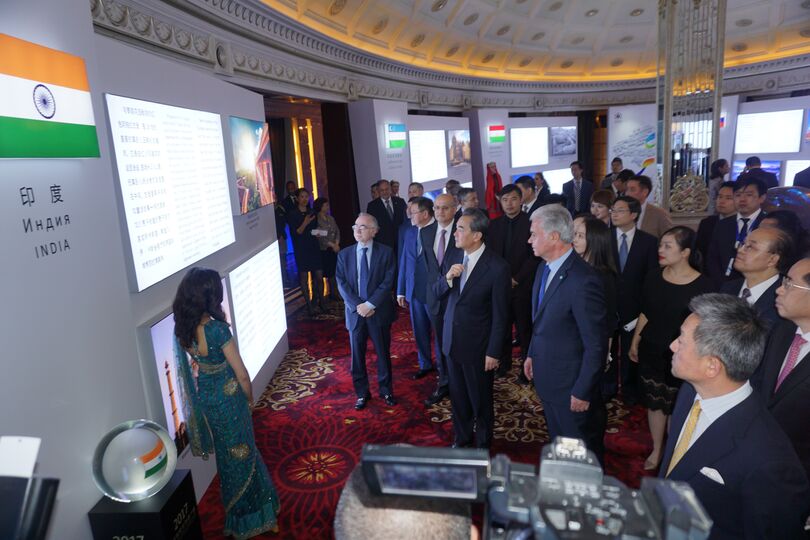An exhibition on UNESCO World Heritage Sites from the countries of the Shanghai Cooperation Organisation (SCO) opened in Beijing on 14 June as part of the celebrations of the SCO's 16th anniversary.
The opening ceremony was attended by SCO Secretary-General Rashid Alimov and Foreign Minister of the Chinese People's Republic Wang Yi.
The opening ceremony was attended by SCO Secretary-General Rashid Alimov and Foreign Minister of the Chinese People's Republic Wang Yi.
The exhibition was organised by the SCO Secretariat and the Academy of Sciences of the People's Republic of China. This is the first exhibition of its kind in SCO history, and includes displays on 16 world heritage sites from the eight SCO countries that are intended to introduce visitors to the SCO's unique natural, historical and cultural landmarks.
On display are the following sites from SCO: the Agra Fort and the Taj Mahal Mausoleum (India); the Mausoleum of Khoja Ahmed Yasawi in the city of Turkestan (old name Yassy) Yasy and Saryarka — steppe and lakes of Northern Kazakhstan (Kazakhstan); the Forbidden City of the Ming and Qing dynasties, the Mausoleum of the First Qin Emperor (China); Sulaiman-Too Sacred Mountain and the Western Tien-Shan ranges (Kyrgyzstan); Archaeological Ruins at Moenjodaro and the Fort and Shalimar Gardens in Lahore (Pakistan); the Moscow Kremlin, Red Square and Lake Baikal (Russia); the ancient site of Sarazm and Tajik National Park in the Pamir Mountains (Tajikistan) and the Historic Centre of Bukhara and Samarkand — Crossroads of Cultures (Uzbekistan).
The exhibition met with considerable interest among guests and participants, including prominent politicians, high-ranking officials of China's ministries and departments, heads of diplomatic missions in China, academics, experts and journalists.
World Heritage Sites are landmarks or areas designated by the United Nations Educational, Scientific and Cultural Organisation (UNESCO).
The preservation and promotion of these sites is a priority owing to their special cultural, historical or ecological value.
In 2016 the UNESCO World Heritage List had 1,052 landmarks, including 814 cultural, 203 natural and 35 mixed ones in 165 countries that are signatories to the Convention Concerning the Protection of the World Cultural and Natural Heritage.
There are 128 landmarks from the UNESCO World Heritage in the eight SCO countries, or more than 12 percent of the total.
